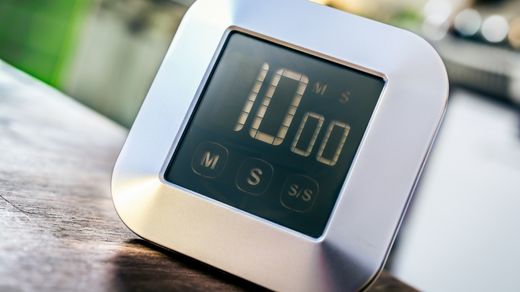In the ever-evolving landscape of education, the quest to enhance the learning experience for students is a continuous endeavor. Educators are constantly seeking innovative ways to engage students, manage classroom activities effectively, and ensure that every moment spent in the classroom is maximized for learning. One such innovation that has gained prominence in recent years is the use of “Big Timers” in the classroom. These specialized timing tools have demonstrated a significant impact on classroom learning, transforming the way lessons are delivered and managed. In this comprehensive guide, we will explore the world of Big Timers in education, their significance, and how they can positively influence the learning environment.
The Role of Time Management in Education
Time management is a fundamental aspect of effective teaching and learning. In a classroom setting, time is a finite resource, and optimizing its use is crucial for several reasons:
- Engagement
Engaging students in meaningful learning activities requires careful planning and pacing of lessons. Effective time management ensures that lessons remain dynamic and students remain actively involved.
- Student Performance
Well-structured lessons with precise timing can enhance student comprehension and retention of material. Students are more likely to grasp concepts when they are presented in a logical and organized manner.
- Classroom Management
Managing a classroom efficiently involves coordinating various activities, transitions, and student interactions. Proper time management minimizes disruptions and ensures a smooth flow of instruction.
The Big Timers Toolbox for Educators
To harness the power of time management in the classroom, educators utilize a set of specialized tools and strategies, collectively known as the Big Timers toolbox:
- Digital Timers
Digital timers are versatile tools that can be set to specific time intervals. They help educators allocate time for various activities, such as lectures, discussions, group work, and assessments. Timers serve as visual cues for both teachers and students, keeping everyone on track.
- Visual Timetables
Visual timetables or schedules display the daily or weekly agenda, including class timings, breaks, and subject rotations. These schedules provide students with a clear understanding of what to expect and help teachers stay organized.
- Countdown Clocks
Countdown clocks are dynamic timers that display the remaining time for an activity or task. They create a sense of urgency and help students manage their time effectively during activities like exams or timed assignments.
- Online Learning Platforms
Many online learning platforms include built-in timers and scheduling features. These tools help educators design asynchronous lessons and assessments with specific time constraints.
- Projector Clocks
Projector clocks display the time on a screen for the entire class to see. They serve as a constant reminder of time and help maintain a structured learning environment.
Transforming Learning with Big Timers
Now, let’s explore how Big Timers can positively impact the classroom learning experience:
- Enhanced Engagement
Big Timers create a sense of structure and focus in the classroom. When students know that specific activities have allocated time slots, they are more likely to engage actively during those periods.
- Effective Transitions
Transitions between activities or subjects can be challenging for both educators and students. Big Timers provide clear signals for when it’s time to move on to the next task, reducing disruptions and enhancing classroom efficiency.
- Time Management Skills
Exposure to big timer helps students develop essential time management skills. They learn to prioritize tasks, allocate time effectively, and work within deadlines – valuable skills for both academic and real-world success.
- Reduced Anxiety
For timed assessments, countdown clocks provide a visual representation of the remaining time. This transparency helps reduce test-related anxiety by allowing students to manage their time more effectively.
- Improved Accountability
When educators use Big Timers to track lesson progression, they become more accountable for sticking to the planned curriculum. This ensures that all essential topics are covered within the allocated time.
Conclusion
The impact of Big Timers on classroom learning is undeniable. These specialized timing tools empower educators to create a structured and engaging learning environment that optimizes every moment for student growth and development. From enhancing engagement and time management skills to reducing anxiety and improving accountability, the benefits of Big Timers in education are multifaceted.
As educators continue to explore innovative ways to improve teaching and learning, Big Timers have emerged as an invaluable resource. They not only facilitate effective time management but also contribute to a positive and productive classroom atmosphere. By incorporating Big Timers into their teaching strategies, educators are shaping the future of education, one well-timed lesson at a time


